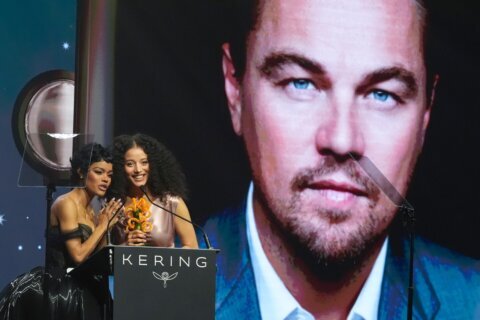WASHINGTON — Talk of Pixar animation often insists that these are kids movies made for adults. After watching “Inside Out,” you’ll believe the contrary: these are adult movies made for kids.
The studio’s 15th animated feature is also its most mature, inviting audiences to a world of pure imagination, while subversively serving us an animated therapy session. You’ll laugh so hard that you’ll cry, then chuckle at yourself for getting so misty-eyed at a Pixar cartoon — again.
The movie takes us inside the adolescent head of 11-year-old Riley (Kaitlyn Dias) as her parents (Diane Lane and Kyle MacLachlan) uproot her from the Midwest to San Francisco, where she endures the pains of a new house, new school, new hockey teammates and a total lack of friends.
We experience this transition both in the outward human world and the internal world of Riley’s head, where personified emotions take turns controlling the switchboard. There’s the optimistic ringleader Joy (Amy Poehler of “Parks and Recreation”), the ever-mopey Sadness (Phyllis Smith of “The Office”), the neurotic coward Fear (Bill Hader of “SNL”), the passive aggressive Disgust (Mindy Kaling of “The Mindy Project”) and the fuming hothead Anger (Lewis Black of “The Daily Show”).
Each time a new memory is formed, it takes the shape of a ball rolling down a special chute, a la “Minority Report” (2002). These balls change colors — and moods — depending on which emotion touches them. Meanwhile, the big experiences of Riley’s life form islands of her personality — Family Island, Friendship Island, Honesty Island, Hockey Island and, most importantly, Goofball Island.
It’s a remarkable achievement by Pixar to find such creative ways to visualize psychological concepts. They’re presented as objects (memory hard drives), vehicles (The Train of Thought), locations (Imagination Land), movie studios (Dream Productions) and characters (Riley’s ideal boyfriend).
The most touching of these is Riley’s long-lost imaginary friend, Bing Bong, enthusiastically voiced by Richard Kind (“Spin City”). Just as “Toy Story” jerked our tears by watching kids abandon their childhood toys — Rosebud style — “Inside Out” makes us mourn our own imaginary friends.
It should be no surprise that the film is directed by “Toy Story” co-writer Pete Docter, who got his first chance to direct on “Monsters Inc.” (2001) before winning an Oscar for “Up” (2009). This time, he codirects with first-timer Ronaldo del Carmen, who previously served as Pixar storyboard artist on “Ratatouille” (2007) and “Up” (2009). Together, they shape a clever directorial vision, from POV shots out Riley’s eyeballs like “Being John Malkovich” (1999) or a phenomenal sequence that tweaks our own 3D glasses for a bit of abstract art (we won’t spoil how, but it’s hilariously creative).
Scene by scene, the adventure propels forward with new treats that will leave you watching in wonder. Just when you think the film can’t possibly have anything left in the tank, it sticks its landing with a message for all ages: that it’s OK to be sad. “Inside Out” teaches us that it’s healthy to experience melancholy, that sometimes through loss, we find therapeutic understanding.
It’s the right film at the right time for a world grappling with depression and mental illness. More immediately, parents will be able to use the movie as a teachable reference point when trying to get their kids to stop crying, or to eat broccoli, or to stop being scared of the basement steps. “How would Joy handle this? You don’t want to be like Disgust, do you? Stop screaming like Anger!” In this way, the movie will live on — not in a singing “Let it Go” sort of way, but as a valuable parenting tool.
Will much of its greatness sail over kids’ heads? Probably. But don’t worry. The kiddies will be dazzled by the gorgeous animation, humorous sight gags and world of imagination. As the toddler next to me began to cry — engrossed in the movie — it was clear Pixar had her right where they wanted her.
There, there, little one. We adults had glassy eyes behind our 3D glasses, too.
★ ★ ★ ★
The above rating is based on a 4-star scale. See where this film ranks in Jason’s Fraley Film Guide. Follow WTOP Film Critic Jason Fraley on Twitter @JFrayWTOP.








